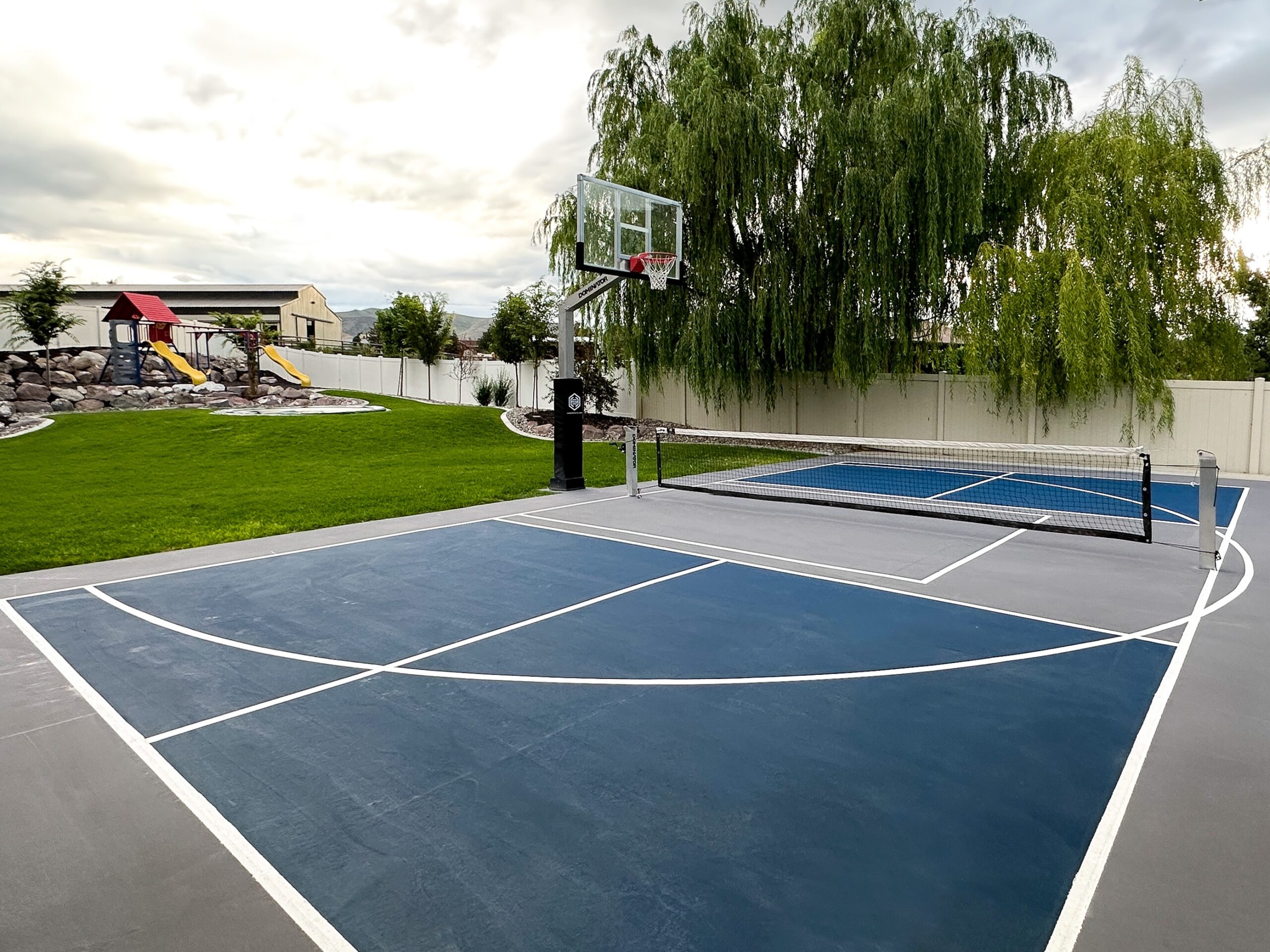Navigating Laws for Pickleball Court Building in Your Location
Building a pickleball court in your location needs a nuanced understanding of numerous local guidelines, including zoning legislations, building permits, and security requirements. Involving with regional authorities and the neighborhood is important for guaranteeing compliance and cultivating assistance.
Understanding Local Zoning Legislations
When taking into consideration the building of a pickleball court, understanding neighborhood zoning regulations is important to making certain compliance and avoiding prospective lawful problems. Zoning laws dictate exactly how land can be made use of and often consist of specifications pertaining to entertainment centers. These regulations can vary dramatically by municipality, impacting elements such as court positioning, noise, illumination, and dimension degrees.
Prior to starting building, it is important to get in touch with the neighborhood zoning board or preparation division to determine the certain guidelines that relate to your residential or commercial property. Certain zones might restrict recreational activities, while others may require certain licenses or adherence to specific guidelines. It is additionally crucial to think about problems, which determine how far frameworks have to be from property lines or various other structures.
Furthermore, private developments, such as home owner associations (HOAs), may impose their very own guidelines regarding the building and use pickleball courts. Recognizing these guidelines can avoid expensive alterations or litigation down the line. Involving with local stakeholders and community participants can supply important understandings and foster support for your job, guaranteeing that it straightens with the area's requirements and assumptions.
Getting Necessary Structure Allows
How does one navigate the intricacies of getting necessary building authorizations for a pickleball court? Usually, you will need to send a detailed site strategy that outlines the recommended court dimensions, materials, and layout.

When authorizations are gotten, it is important to stick to any type of assessment schedules and needs throughout the construction stage. Keeping interaction with neighborhood authorities will certainly promote a smoother approval process and assistance prevent potential problems. By completely preparing and recognizing the allowing landscape, you can effectively navigate the complexities associated with building a pickleball court while staying certified with all local regulations.

Assessing Environmental Influence
A thorough evaluation of ecological effect is vital when planning the building and construction of a pickleball court. This assessment aids identify possible effects on regional ecological communities, water resources, and community aesthetics. Secret factors to think about consist of site option-- guaranteeing that the court is not constructed on environmentally sensitive land, such as wetlands or environments for endangered types
Dirt security and water drainage patterns ought to be examined to stop erosion and water pooling, which could negatively influence bordering vegetation and wildlife. Furthermore, the selection of materials is crucial; selecting environmentally friendly and sustainable choices lessens ecological damage.
The execution of reliable stormwater management practices is another important facet, as it aids minimize drainage and sedimentation. Involving with local environmental firms can supply important insights into guidelines and finest methods certain to your area.
Finally, neighborhood input can be helpful in recognizing any kind of regional environmental issues and promoting support for the project. By conducting a complete environmental impact assessment, stakeholders can ensure that pickleball court construction lines up with lasting practices and contributes positively to the community's eco-friendly wellness.
Abiding By Security Criteria
Guaranteeing compliance with safety and security requirements is important for the successful building and procedure of a pickleball court. Sticking to recognized safety regulations minimizes the danger of accidents and injuries, making sure a secure environment for gamers.
Key safety and security requirements consist of appropriate court dimensions, surface area products, and illumination requirements. The court has to satisfy the main dimensions of 20 feet wide by 44 feet long for doubles play, with suitable buffer areas to stop injuries from wayward rounds. Pickleball court construction. The surface area ought to be created from non-slip materials to improve grip and lower the possibility of drops
Additionally, illumination must be appropriate for night play, providing uniform lighting to avoid darkness that can prevent visibility. Local building regulations might likewise determine particular demands for secure fencing and web elevation to ensure player security and prevent unauthorized accessibility to the court location.
Regular assessments and upkeep are important to support these requirements gradually. By focusing on safety and security conformity, court owners not only our website secure gamers but additionally promote a favorable online reputation within the community. This dedication to safety can encourage greater involvement and pleasure of the sporting activity, eventually adding to its development and sustainability.

Involving the Area in Planning
Area involvement in the planning stages of pickleball court building can significantly improve the job's overall success. Involving local citizens and stakeholders cultivates a feeling of ownership and urges collaborative decision-making, which can result in wider assistance for the campaign.
To efficiently entail the community, organizers ought to start public meetings or workshops, providing a platform for homeowners to voice their opinions and preferences concerning place, layout, and services. Studies and responses forms can additionally be utilized to gather insights from a wider target market, ensuring that diverse perspectives are considered.
Moreover, forming a neighborhood board of advisers can assist in continuous discussions and address issues throughout the planning process. This board can include representatives from various demographics, such as neighborhood colleges, entertainment organizations, and neighborhood watch, consequently magnifying community depiction.
Efficient communication is essential; updates about the task ought to be regularly shared using e-newsletters, social networks, or local notices. By focusing on area interaction, planners can grow interest, minimize possible resistance, and create a pickleball center that genuinely resonates with neighborhood worths and needs. This joint technique not only enhances the project but additionally enhances area ties.
Verdict
In conclusion, browsing the complexities of pickleball court building and construction requires a comprehensive understanding of local guidelines, consisting of zoning legislations, structure licenses, and security standards. Conducting ecological evaluations is necessary to minimize environmental influence, while neighborhood involvement go to my blog can improve assistance for such projects. By sticking to these standards and fostering partnership, successful execution of pickleball courts can be accomplished, advertising recreational chances and area well-being. Proceeded persistance in these areas will make certain certified and lasting development.
Building a pickleball court in your area needs a nuanced understanding of numerous neighborhood regulations, including zoning laws, building permits, and safety requirements.When thinking about the building and construction of a pickleball court, recognizing neighborhood zoning legislations is essential to guaranteeing compliance and avoiding potential lawful issues. By thoroughly preparing and understanding the permitting landscape, you can efficiently browse the intricacies included in building a pickleball court while staying compliant with all get more local laws.
In verdict, browsing the complexities of pickleball court construction necessitates an extensive understanding of local laws, including zoning legislations, building permits, and safety and security requirements. By sticking to these guidelines and cultivating cooperation, successful implementation of pickleball courts can be achieved, advertising leisure opportunities and neighborhood well-being.